Baseball Practice Plans
If anyone tries to sell you a 1 baseball practice plans which covers everything you need to know, run and don’t look back, because it’s either a scam or the person has no idea what they’re talking about. Either way you don’t want to be involved.
I am going to layout a simple basic practice plan for inexperienced baseball coaches as a place to begin. As they gain experience, becoming more comfortable with coaching and seeing what the team needs to work on, they can alter, add, subtract as they need.

Remember Basic Skills… Throwing, Catching and Hitting. All practices, unless there’s a specific need to be addressed, should touch on all 3 of the basics.
Being on Time:
I can not stress this enough for new coaches, as Players must arrive on time to practice. Practice is called for 5 p.m. and you have players straggling in late over a 10 minute time frame this is what you have:
1. You’ll have half the team warmed up and half the team not warmed up. You’re 10 minute warm up period, which had you beginning practice in earnest at 5:10 is now 5:20 at the earliest, or risk injuring arms. Time is of the essence especially early in the season.
2. You were going to use a 10 minute long toss session to increase arm strength, but now you have half the team whose already made 30 more throws than the other, what to do.
I believe I’ve made my point…. Being On Time Is Imperative. Stress It.
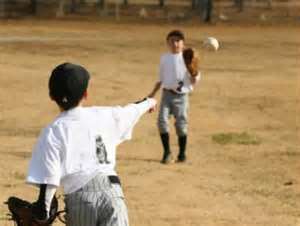
Baseball Practice Plans
Warming Up
Start On Time:
Some Players’ parents will always have them there a few minutes early and you don’t want them standing around getting bored or mischievous. Develop a simple stretching routine for them to perform. Stretching, even at a young age does no harm, it keeps them occupied and it sets a fantastic habit of warming up properly which will stay with them through their entire career.
1. Divide the team, depending on age, space them 20’ apart and have them begin throwing and playing catch for @ 3 minutes.
2. Move them 10’ farther apart for 3 minutes.
3. Move them again 10’ farther apart for 3 minutes.
As the season progresses and arm strength increases, move the players apart in 20’ - 25’ increments. Long toss is the Best method for building arm strength.
You’re not only loosening arms up, but simultaneously you are also strengthening their arms, maximizing time and effort.
Clickbank Products
Fielding:
It’s a coach’s natural instinct to set your defense by your player evaluation, but don’t get locked into a pre-conceived game plan. Practice all players at all positions.
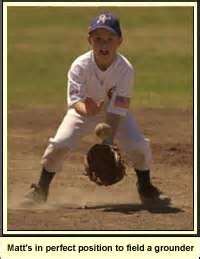
1. Player skills will/may quickly change as the year progresses;
2. Players will miss games. You don’t want your third baseman on vacation and nobody else has ever played that position;
3. By having a well trained versatile team you give yourself a lot of available options.
Infield:
I have seen coaches spread their players out in a fanned technique around the entire infield, but in my experience it creates more confusion as to who will field the ball, but you can do it this way if you want. Be sure you know every player’s name to identify who should catch the ball. It’s embarrassing, especially if the parent is there, to not know a player’s name.
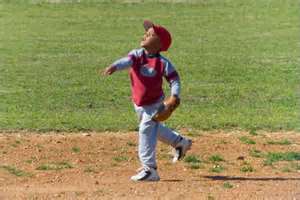
Baseball Practice Plans
Throw to First
I suggest assigning players to each infield position. The fielders will rotate turns, which provides for order. If there are 3 players positioned at third base, hit a ball to each one, having them throw to first base. The first baseman throws the ball to the catcher at the plate, who gives you the ball to hit again. Continue around the horn.
Go through the infield at least 3 times, altering from third to second to shortstop, to keep the players on their toes. As you progress,
(1.) hit the ball harder;
(2.) hit the ball to the left and right of the fielder;
(3.) hit high hoppers and skimming ground balls;
(4.) always have the infielder throw the ball either to first base or home plate;
(5.) if you have more than 1 catcher, have the infielder throw the ball to first base, then retreat to cover his base to receive a throw from the catcher. (who received the ball from the first baseman)You shouldn’t have 1 catcher throw that many balls to bases, especially second base.
You now have completed your infield practice, quickly move to outfield practice by having your players run to the outfield.
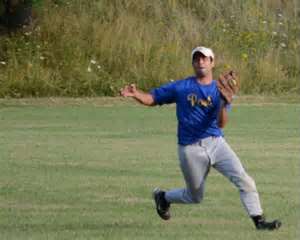
Baseball Practice Plans
Circling a Fly Ball
Outfield:
(1.) This is to the coach’s discretion of how he wants to set the players up, either assign to a certain field, or spread them out in a fanned technique around the entire outfield. Since you will be going down the player line hitting fly balls, each player knows when it’s their turn so confusion is avoided.
(2.) Although the players know who the ball is hit to, have the player yell “I’ve got it” as it’s never too early to teach outfield communication.
(3.) Position a cut off man along the base paths, who will move as the ball travels from left to right, to receive the throw back in from the outfielders. He in turn will throw the ball to the catcher.
(4.) As players’ arms become stronger, either move the cut off man to each side of the pitching mound, or do away with him all together having the throw come directly to the catcher.
You have now completed your fielding practices and it’s time to do some hitting, or BP as they call it.

Baseball Practice Plans
Stretching While On Deck
Batting Practice:
(1.) Have your catcher(s) suit up and catcher batting practice;
(2.) At youth level a coach should always throw batting practice;
(3.) Have your players spread out covering both the infield and outfield;
(4.) Have 1 player batting and another player on deck;
(5.) Throw from a distance and speed which is age appropriate; For my older teams I had to pitch from 50’ instead of 60’ 6” because my arm wasn’t strong enough to reach the required velocity I needed.
(6.) Be sure to instruct the players to only swing at strikes. This is a hitting drill, but learning not to swing at bad pitches is every bit as important as crushing the ball;
(7.) Tell the player if he’s letting too many strikes go by without swinging;
(8.) I usually gave a batter 10 hits, but if a player can’t hit 10 within a reasonable time, you must adjust;
(9.) After the 10th hit I always threw 1 more pitch which the batter bunted.
Go through the entire line up.
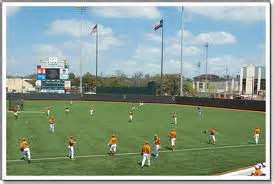
Long Toss Drill
Baseball Practice Plans
In 1 ½ hours, the time goal, you have strengthened every player’s arm, increased throwing accuracy, improved fielding techniques of both of ground balls and fly balls, improved each player’s ability to hit and bunt a pitched ball and have increased their endurance. Not bad for an 1 1/2 hours.
You have also made mental notes of each player’s;
(1.) Arm strength;
(2.) Fielding abilities;
(3.) Throwing accuracy;
(4.) Movement to the ball;
(5.) Swing and power of hitting.
To reiterate, this is basic baseball practice plans and can be altered anyway you want. But it’s an excellent starting point until you get your feet wet.
Baseball Practice Plans to Baseball Skill Drills
Coaching Little League Baseball

New! Comments
Have your say about what you just read! Leave me a comment in the box below.